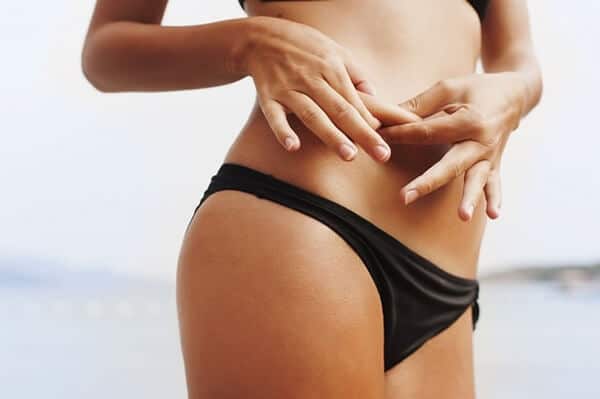
If you are in relatively good shape yet have pockets of stubborn fat that won’t go away no matter how much you diet or exercise, you may be a good candidate for liposuction. Many of those who consider liposuction, however, are confused about where the fat cells go after they are removed during this surgical procedure. Do they grow back? Will they show up in different areas of the body? These are valid questions, and ones that can be easily answered by a knowledgeable and experienced plastic surgeon such as Dr. Diehl. Here is a bit more information on the liposuction process and what really happens to those fat cells once they are removed.
What is Liposuction?
Traditional liposuction is a surgical procedure that is conducted under general anesthesia and sometimes local anesthesia. It is usually performed in a hospital or in a medical office that is equipped for outpatient surgery. After the anesthesia is administered, the surgeon will insert a stainless steel instrument called an infusion cannula to “tumesce” the area. This means that a large volume of fluid is administered to the entire area of fatty tissue. Then, through the same small incisions, a different type of cannula is inserted that is attached to a suction device. He or she will then gently suction out the excess fat in the predetermined areas to create a slimmer, smoother appearance. After the surgery, you will be given time to rest and recover before being released to fully recuperate in your own home. You should have someone to drive you home and should expect to take it easy for a week or two after surgery before returning to your normal schedule.
What is “Laser Liposuction” or SmartLipo?
Laser liposuction is basically the same process, but with two big differences. Most patients having laser liposuction are under local anesthesia only, avoiding the need for general anesthesia. The tumescent and suctioning process is the same, but sandwiched between them the laser is passed. The laser gives the additional advantages of some improved skin tightening and less bruising (resulting in a more comfortable recovery). Otherwise, The procedure, garment use, and post-operative care is the same.
How Does It Work?
The reason that liposuction works is that the number of fat cells in our body remains quite stable after we reach adulthood. When you lose or gain weight, you are not actually losing or gaining fat cells—your existing fat cells are just getting smaller or larger. That means that if excess fat cells exist in certain parts of your body such as your thighs or lower belly, it is much easier to gain weight in those areas and it may not be as easy to get rid of excess fat with diet or exercise alone. You can not ‘spot reduce’ fat cells. When you lose weight, you will lose it in all of your fat cells—even in areas where weight loss is not desired. If you want to reduce your proportions or reduce fat in a certain area, you should consider a procedure like liposuction that can achieve these results.
So What Really Happens to Those Cells?
Liposuction permanently removes fat cells from targeted areas on your body. Your body will not replace them, and you will not accumulate more fat in the remaining cells that are in the treated areas as long as you maintain a healthy lifestyle and keep your weight stable. Some people believe that removing fat cells from one area causes them to increase in another, but this is not true. It may seem that way since the treated area will be noticeably slimmer, but fat cells that are manually removed can never return to your body. If you do not maintain your weight, however, you could gain more weight in untreated areas as they will still have the same number of fat cells as they did before the surgery. Liposuction is really only changing your proportion of fat cells in an area, so after liposuction if there is weight gain, it will show where there are more fat cells. For example, a patient feels that their problem area is the abdomen and a large number of the fat cells from this area are removed with the liposuction procedure. If that patient were to gain a significant amount of weight, proportionally they now may have more fat cells in the butt and thighs. This area will enlarge proportionally more because there are now more fat cells that can get larger in the part of her body compared to the abdomen (which used to proportionally have more before the surgery).
How Can I Maintain My Results?
Committing to a healthy lifestyle and maintaining a good diet and stable weight is the best way to ensure you maintain the results that come from liposuction. Those who experience the best results from liposuction are those who are already within five or ten pounds of their goal weight and simply have excess fat in certain areas that never seem to go away.
Keep in mind that the natural aging process will still have an effect on your weight and body shape after liposuction. Your metabolism will likely slow down as you age and you may notice additional changes in your body. Some liposuction patients return to their surgeon a few years down the road when additional procedures are desired. At this time, your surgeon will consult with you to see if an additional liposuction surgery is warranted or if other procedures could produce the results you want to see.
Working with a skilled and knowledgeable plastic surgeon such as Dr. Diehl for your liposuction procedure is imperative to both your safety and your satisfaction with the results. If you are interested in learning more about liposuction and if the procedure may be right for you, contact Dr. Diehl’s office to schedule a consultation.

